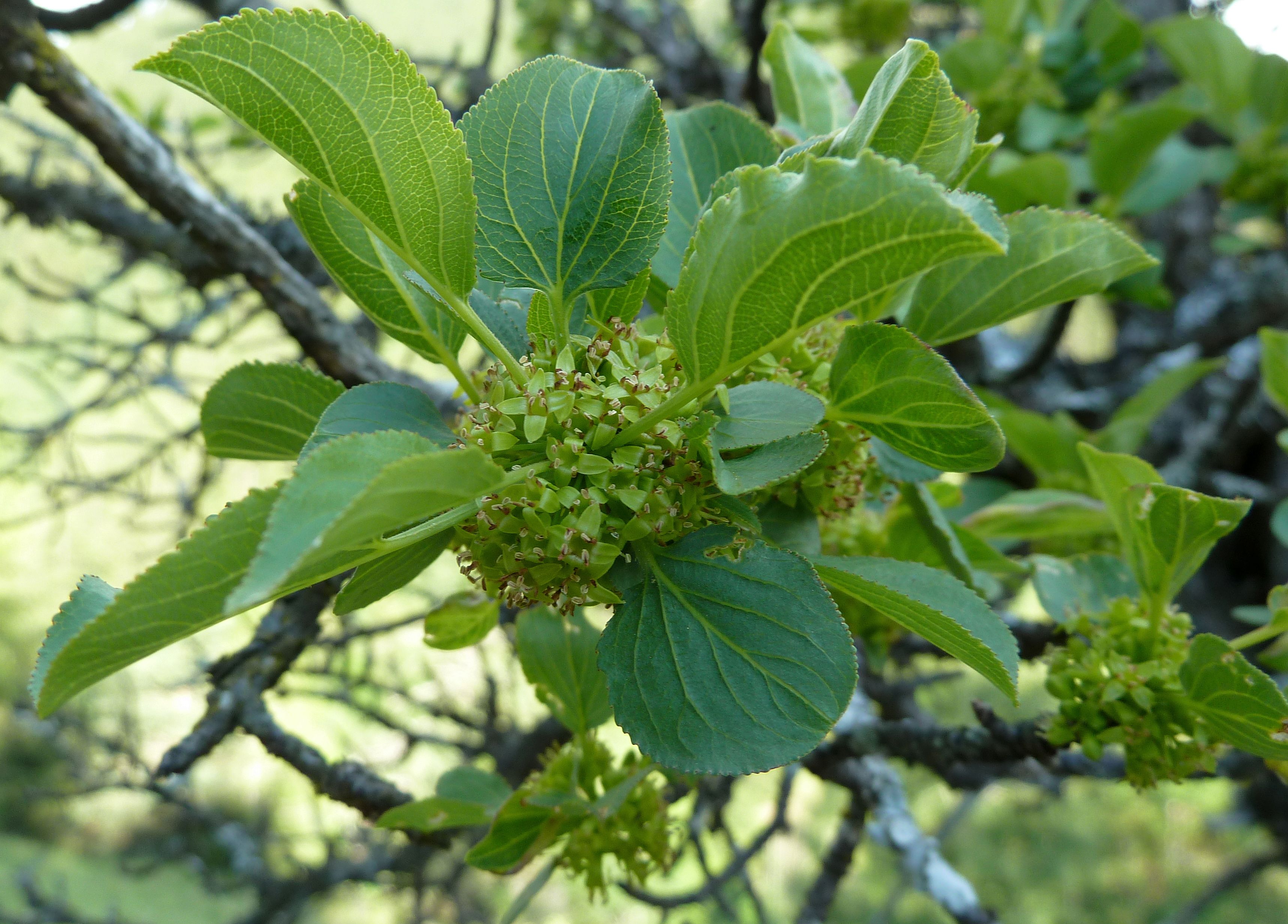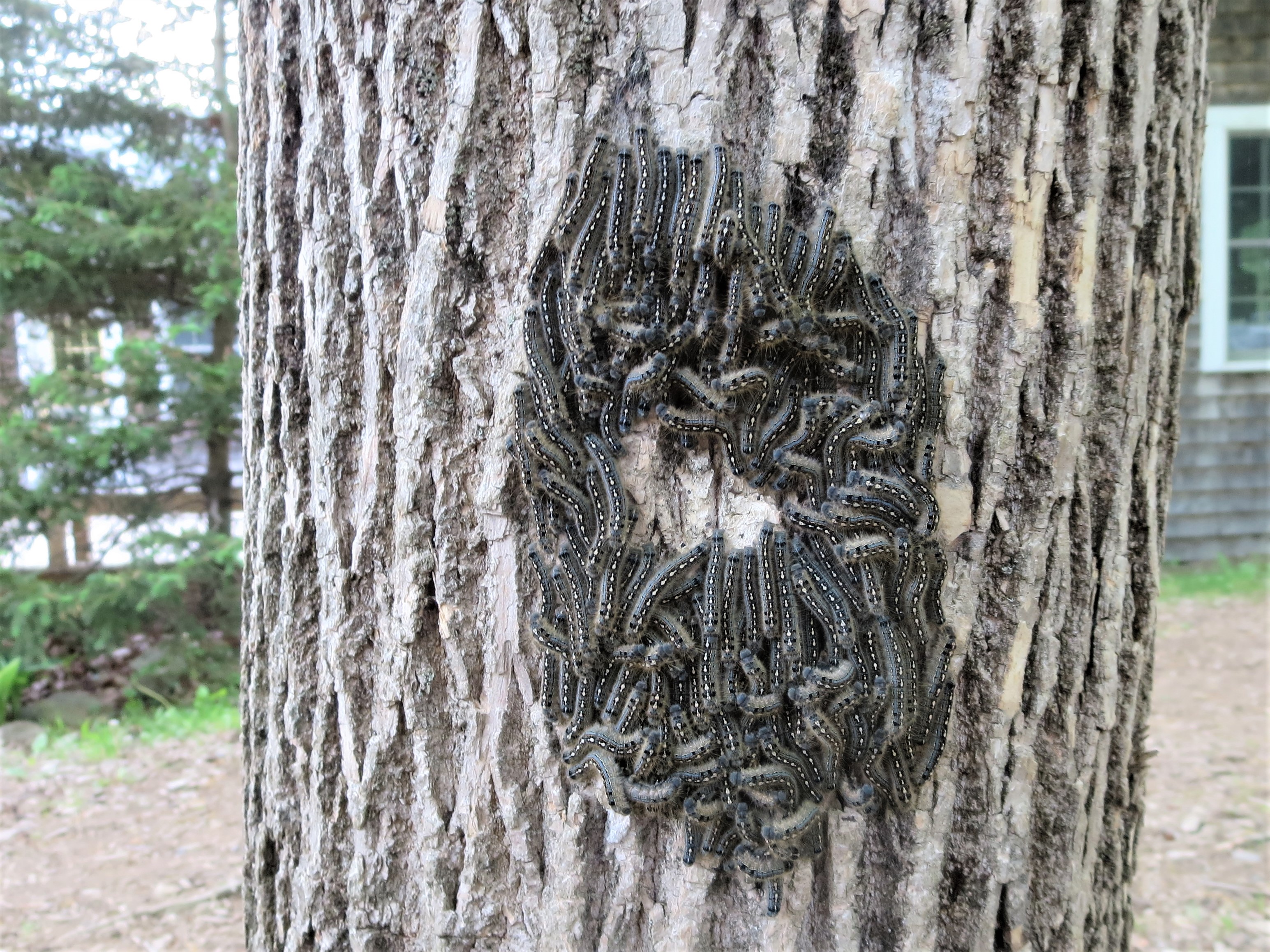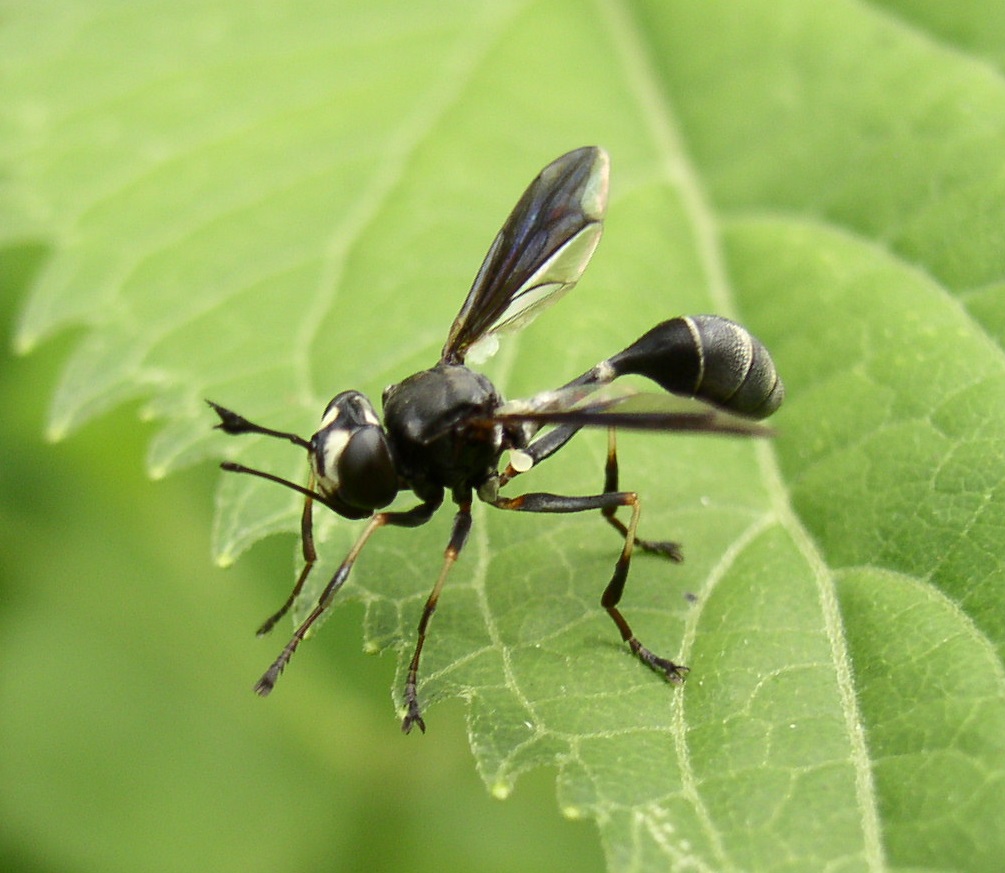|
Overwinter
Overwintering is the process by which some organisms pass through or wait out the winter season, or pass through that period of the year when "winter" conditions (cold or sub-zero temperatures, ice, snow, limited food supplies) make normal activity or even survival difficult or near impossible. In some cases "winter" is characterized not necessarily by cold but by dry conditions; passing through such periods could likewise be called overwintering. Hibernation and migration are the two major ways in which overwintering is accomplished. Animals may also go into a state of reduced physiological activity known as torpor. Overwintering occurs in several classes of lifeform. Insects In entomology, overwintering is how an insect passes the winter season. Many insects overwinter as adults, pupae, or eggs. This can be done inside buildings, under tree bark, or beneath fallen leaves or other plant matter on the ground, among other places. All such overwintering sites shield the insect ... [...More Info...] [...Related Items...] OR: [Wikipedia] [Google] [Baidu] |
Monarch Butterfly
The monarch butterfly or simply monarch (''Danaus plexippus'') is a milkweed butterfly (subfamily Danainae) in the family Nymphalidae. Other common names, depending on region, include milkweed, common tiger, wanderer, and black-veined brown. It is amongst the most familiar of North American butterflies and an iconic pollinator, although it is not an especially effective pollinator of milkweeds. Its wings feature an easily recognizable black, orange, and white pattern, with a wingspan of . A Müllerian mimic, the viceroy butterfly, is similar in color and pattern, but is markedly smaller and has an extra black stripe across each hindwing. The eastern North American monarch population is notable for its annual southward late-summer/autumn instinctive migration from the northern and central United States and southern Canada to Florida and Mexico. During the fall migration, monarchs cover thousands of miles, with a corresponding multigenerational return north in spring. The wes ... [...More Info...] [...Related Items...] OR: [Wikipedia] [Google] [Baidu] |
Gonepteryx Rhamni
''Gonepteryx rhamni'' (known as the common brimstone) is a butterfly of the family Pieridae. It lives throughout the Palearctic zone and is commonly found across Europe, Asia, and North Africa. Across much of its range, it is the only species of its genus, and is therefore simply known locally as the brimstone. Its wing span size is 60 - 74 mm. The brimstone relies on two species of buckthorn plants as host plants for its larvae; this influences its geographic range and distribution, as these plants are commonly found in wetlands. The adult brimstone travels to woodland areas to spend seven months overwintering. In spring when their host plants have developed, they return to the wetlands to breed and lay eggs. Both the larval and adult forms of the common brimstone have protective coloration and behaviour that decreases their chances of being recognised and subsequently preyed upon. The adult common brimstone has sexual dimorphism in its wing coloration: males have yellow wi ... [...More Info...] [...Related Items...] OR: [Wikipedia] [Google] [Baidu] |
Lasioglossum Hemichalceum
''Lasioglossum hemichalceum'', which has sometimes been confused with '' L. erythrurum,'' is a sweat bee endemic to Australia. Large numbers of unrelated females will typically share a single nest, a behavior referred to as "communal". Nests are constructed underground by the independent efforts of the females. ''L. hemichalceum'' will typically begin creating new colonies during the summer, with brood production from late November through the first few months of spring. Members of this species do not demonstrate aggressive behavior towards one another. As the size of the colony increases, the reproductive potential of each female does not change, unlike many species of bees. Taxonomy and phylogeny ''Lasioglossum hemichalceum'' is part of the genus ''Lasioglossum, subgenus ''Chilalictus''.'' Other species within this genus include ''Lasioglossum malachurum'', ''Lasioglossum zephyrus'' and '' Lasioglossum clarum''. ''Lasioglossum'' species which occupy parts of Africa and centra ... [...More Info...] [...Related Items...] OR: [Wikipedia] [Google] [Baidu] |
Forest Tent Caterpillar Moth
The forest tent caterpillar moth (''Malacosoma disstria'') is a moth found throughout North America, especially in the eastern regions. Unlike related tent caterpillar species, the larvae of forest tent caterpillars do not make tents, but rather, weave a silky sheet where they lie together during molting. They also lay down strands of silk as they move over branches and travel as groups along these pheromone-containing silk trails. The caterpillars are social, traveling together to feed and massing as a group at rest. Group behavior diminishes as the caterpillars increase in size, so that by the fifth instar (molt) the caterpillars are feeding and resting independently.Forest tent caterpillars, University of Florida James R. Meeker, Florida Department of Agriculture and Consumer Servi ... [...More Info...] [...Related Items...] OR: [Wikipedia] [Google] [Baidu] |
Nymphalis Antiopa
''Nymphalis antiopa'', known as the mourning cloak in North America and the Camberwell beauty in Britain, is a large butterfly native to Eurasia and North America. The immature form of this species is sometimes known as the spiny elm caterpillar. Other older names for this species include grand surprise and white petticoat. A powerful flier, this species is sometimes found in areas far from its usual range during migration. These butterflies have a lifespan of 11 to 12 months, one of the longest lifespans for any butterfly. It is also the state insect of the U.S. state of Montana, adopted in 2001. Etymology The specific epithet ''antiopa'' is thought to be derived from Antiope, a common name in Greek mythology. North American name "mourning cloak" In several European countries with Germanic languages, other than Britain, the name for this butterfly literally translates to "mourning cloak", such as German "Trauermantel", Dutch "rouwmantel", Swedish "sorgmantel", Finnish "su ... [...More Info...] [...Related Items...] OR: [Wikipedia] [Google] [Baidu] |
Animal Migration
Animal migration is the relatively long-distance movement of individual animals, usually on a seasonal basis. It is the most common form of migration in ecology. It is found in all major animal groups, including birds, mammals, fish, reptiles, amphibians, insects, and crustaceans. The cause of migration may be local climate, local availability of food, the season of the year or for mating. To be counted as a true migration, and not just a local dispersal or irruption, the movement of the animals should be an annual or seasonal occurrence, or a major habitat change as part of their life. An annual event could include Northern Hemisphere birds migrating south for the winter, or wildebeest migrating annually for seasonal grazing. A major habitat change could include young Atlantic salmon or sea lamprey leaving the river of their birth when they have reached a few inches in size. Some traditional forms of human migration fit this pattern. Migrations can be studied using traditi ... [...More Info...] [...Related Items...] OR: [Wikipedia] [Google] [Baidu] |
Insect
Insects (from Latin ') are pancrustacean hexapod invertebrates of the class Insecta. They are the largest group within the arthropod phylum. Insects have a chitinous exoskeleton, a three-part body ( head, thorax and abdomen), three pairs of jointed legs, compound eyes and one pair of antennae. Their blood is not totally contained in vessels; some circulates in an open cavity known as the haemocoel. Insects are the most diverse group of animals; they include more than a million described species and represent more than half of all known living organisms. The total number of extant species is estimated at between six and ten million; In: potentially over 90% of the animal life forms on Earth are insects. Insects may be found in nearly all environments, although only a small number of species reside in the oceans, which are dominated by another arthropod group, crustaceans, which recent research has indicated insects are nested within. Nearly all insects hatch f ... [...More Info...] [...Related Items...] OR: [Wikipedia] [Google] [Baidu] |
Ghost Moth
The ghost moth or ghost swift (''Hepialus humuli'') is a moth of the family Hepialidae. It is common throughout Europe, except for in the far south-east. Female ghost moths are larger than males, and exhibit sexual dimorphism with their differences in size and wing color. The adults fly from June to August and are attracted to light. The species overwinters as a larva. The larva is whitish and maggot-like and feeds underground on the roots of a variety of wild and cultivated plants (see list below). The species can be an economically significant pest in forest nurseries. The term ghost moth is sometimes used as a general term for all hepialids. The ghost moth gets its name from the hovering display flight of the male, sometimes slowly rising and falling, over open ground to attract females. In a suitable location several males may display together in a lek. Physiology and description Female ghost moths have a wingspan of 50–70 mm. They have yellowish-buff forewing ... [...More Info...] [...Related Items...] OR: [Wikipedia] [Google] [Baidu] |
Host (biology)
In biology and medicine, a host is a larger organism that harbours a smaller organism; whether a parasitic, a mutualistic, or a commensalist ''guest'' (symbiont). The guest is typically provided with nourishment and shelter. Examples include animals playing host to parasitic worms (e.g. nematodes), cells harbouring pathogenic (disease-causing) viruses, a bean plant hosting mutualistic (helpful) nitrogen-fixing bacteria. More specifically in botany, a host plant supplies food resources to micropredators, which have an evolutionarily stable relationship with their hosts similar to ectoparasitism. The host range is the collection of hosts that an organism can use as a partner. Symbiosis Symbiosis spans a wide variety of possible relationships between organisms, differing in their permanence and their effects on the two parties. If one of the partners in an association is much larger than the other, it is generally known as the host. In parasitism, the parasite benefits a ... [...More Info...] [...Related Items...] OR: [Wikipedia] [Google] [Baidu] |
Winter Season
Winter is the coldest season of the year in polar and temperate climates. It occurs after autumn and before spring. The tilt of Earth's axis causes seasons; winter occurs when a hemisphere is oriented away from the Sun. Different cultures define different dates as the start of winter, and some use a definition based on weather. When it is winter in the Northern Hemisphere, it is summer in the Southern Hemisphere, and vice versa. In many regions, winter brings snow and freezing temperatures. The moment of winter solstice is when the Sun's elevation with respect to the North or South Pole is at its most negative value; that is, the Sun is at its farthest below the horizon as measured from the pole. The day on which this occurs has the shortest day and the longest night, with day length increasing and night length decreasing as the season progresses after the solstice. The earliest sunset and latest sunrise dates outside the polar regions differ from the date of the winter ... [...More Info...] [...Related Items...] OR: [Wikipedia] [Google] [Baidu] |
Physocephala Tibialis
''Physocephala tibialis'' is a species of thick-headed fly (family Conopidae) found throughout the eastern United States, often near flowering plants. The adult fly is primarily black with a yellow face and thin white stripes on the abdomen. It is commonly found along the east coast of the United States and is often found near flowering plants. ''P. tibialis'' flies parasitize many different species of bees by laying their eggs inside the abdomen of their host. The larva hatches inside of the host and grows and develops until it takes up the majority of the host's abdomen. The host then dies and the larva envelopes itself in a puparium and pupates inside of the corpse. After an extended period of pupation, the adult emerges from the corpse of the host bee. When a bee becomes parasitized by a ''P. tibialis'' larva, certain behaviors such as induced grave digging and changes in flower preference often occur. Geographic distribution ''P. tibialis'' is found in North America, primar ... [...More Info...] [...Related Items...] OR: [Wikipedia] [Google] [Baidu] |
Bombus Vosnesenskii
''Bombus vosnesenskii'', the yellow-faced bumblebee, is a species of bumblebee native to the west coast of North America, where it is distributed from British Columbia to Baja California. It is the most abundant species of bee in this range, and can be found in both urban and agricultural areas. Additionally, ''B. vosnesenskii'' is utilized as an important pollinator in commercial agriculture, especially for greenhouse tomatoes. Though the species is not currently experiencing population decline, urbanization has affected its nesting densities, and early emergence of the ''B. vosnesenskii'' has been implicated in the increasing lack of bee diversity on the West coast. Taxonomy and phylogeny The genus name ''Bombus'' – the bumblebee – comes from the Latin word which means a buzzing or humming sound. There are 250 species split into 38 subgenera within the genus ''Bombus''. These subgroups share similar morphologies, despite their varied habitats and behavioral patterns. How ... [...More Info...] [...Related Items...] OR: [Wikipedia] [Google] [Baidu] |


.jpeg)

_.jpg)


.jpg)
.jpg)


.jpg)